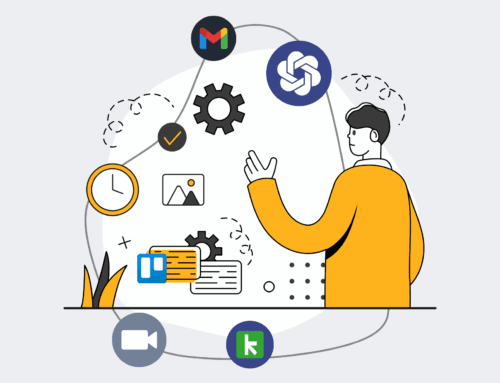Streamlining Onboarding: How Global Talent Solutions Reduced First-Week Churn by 15% with Automated Workflows
Client Overview
Global Talent Solutions (GTS) stands as a beacon in the global recruitment landscape, connecting top-tier talent with innovative tech companies worldwide. Founded in 2010, GTS rapidly grew into a multinational organization with over 500 employees across offices in North America, Europe, and Asia. Their core business relies on agility, precision, and a deep understanding of the tech industry’s unique talent needs. As their workforce expanded, GTS recognized that their internal processes needed to evolve at a similar pace to maintain operational efficiency and employee satisfaction. Their commitment to placing the right people in the right roles extended internally to their own employee experience, particularly during the critical onboarding phase for new hires joining their distributed teams.
Initially, GTS prided itself on a highly personalized, albeit manual, onboarding approach. Each new hire received direct attention from HR, IT, and departmental managers. While well-intentioned, this bespoke process became increasingly unsustainable as the company scaled, leading to bottlenecks, inconsistencies, and a less than optimal introduction to the GTS culture and operational rhythm. The challenge became particularly acute for new recruitment consultants and tech support staff, whose productivity needed to ramp up quickly to meet client demands.
The Challenge
Before partnering with 4Spot Consulting, Global Talent Solutions faced significant challenges stemming from their manual and disparate onboarding processes. This system, while initially manageable, buckled under the weight of rapid expansion and the increasing complexity of a global, remote-friendly workforce. Key pain points included:
- High First-Week Churn: GTS experienced an unacceptably high attrition rate among new hires within their first week, reaching nearly 10-12% for certain roles. This immediate departure indicated a fundamental flaw in the initial onboarding experience, leading to feelings of disengagement, confusion, or being overwhelmed. Each early departure represented a significant loss in recruitment costs, training investment, and potential productivity.
- Inconsistent New Hire Experience: Without a standardized, automated framework, the onboarding experience varied widely depending on the hiring manager, HR representative, and even the new hire’s location. This inconsistency led to disparate access to critical information, varying levels of support, and an uneven introduction to company culture, undermining a unified employee experience.
- HR Overload and Burnout: The HR department, though dedicated, was overwhelmed by administrative tasks. Manual data entry into multiple systems (HRIS, payroll, IT provisioning), scheduling countless orientation sessions, and individually tracking compliance documents consumed an inordinate amount of time. This administrative burden diverted HR’s focus from strategic initiatives like talent development and employee engagement. HR managers reported spending up to 60% of their time on manual onboarding tasks during peak hiring periods.
- Delayed Time-to-Productivity: New hires often experienced delays in receiving necessary equipment (laptops, software licenses), system access, and essential training materials. This lag meant valuable billable hours were lost, impacting project timelines and overall organizational efficiency. It often took new recruitment consultants an additional 1-2 weeks beyond the expected ramp-up time to become fully operational.
- Compliance and Security Risks: Manual processes increased the risk of errors in documentation, missed compliance checks, and potential security vulnerabilities due to delayed or inconsistent IT provisioning and de-provisioning. Ensuring every new hire completed mandatory compliance training and acknowledged company policies was a constant uphill battle.
- Lack of Data & Insights: With a fragmented system, GTS lacked a holistic view of its onboarding performance. It was difficult to track new hire progress, identify common pain points, or measure the effectiveness of various onboarding elements, making continuous improvement nearly impossible.
GTS recognized that addressing these challenges was not merely about efficiency; it was about protecting their investment in talent, enhancing their employer brand, and fostering a strong, cohesive culture from day one. They needed a transformative solution that leveraged technology to automate, standardize, and personalize the onboarding journey.
Our Solution
4Spot Consulting partnered with Global Talent Solutions to engineer a comprehensive, automated onboarding ecosystem designed to address their challenges head-on. Our solution was not a mere software implementation but a strategic overhaul of their entire new hire journey, leveraging best-in-class automation and integration capabilities.
Our approach focused on creating a seamless, personalized, and efficient onboarding experience, ensuring that every new hire felt valued, informed, and equipped for success from the moment they accepted an offer. The core components of our solution included:
- Integrated Workflow Automation Platform: We designed and implemented a centralized workflow automation platform that served as the orchestrator of the entire onboarding process. This platform acted as a single source of truth, integrating various disparate systems used by GTS.
- HRIS-Driven Automation: The solution began with the HR Information System (HRIS) as the foundational data source. Upon a new hire’s acceptance in the HRIS, automated workflows were triggered instantly, initiating a cascade of tasks across multiple departments.
- Automated IT Provisioning: We established automated integrations with GTS’s IT systems. This meant that once a new hire was confirmed, the system automatically created user accounts, provisioned necessary software licenses, ordered and tracked hardware (laptops, monitors, mobile devices), and set up network access and security permissions. Notifications were automatically sent to the IT team for hardware delivery and setup, dramatically reducing delays.
- Personalized Pre-Boarding & Communication: The solution included automated, scheduled communications tailored to the new hire’s role, department, and start date. This encompassed welcome emails, links to essential pre-boarding documents (e.g., offer letters, benefits information, company policies), a personalized onboarding portal with key information, and introductory videos from leadership. This pre-boarding content was drip-fed over several days or weeks leading up to the start date, keeping new hires engaged and informed.
- Automated Compliance & Documentation: We integrated digital signature solutions and automated forms to streamline the collection of necessary legal, tax, and HR documents. Workflows ensured that all mandatory compliance training modules (e.g., data privacy, anti-harassment) were automatically assigned and tracked, with reminders sent until completion. This significantly reduced HR’s manual tracking burden and minimized compliance risks.
- Cross-Departmental Task Orchestration: Beyond HR and IT, the automated workflows extended to other departments. For instance, the system automatically notified hiring managers to prepare for the new hire’s arrival, assigned a mentor, scheduled introductory meetings, and initiated departmental-specific training paths. Facilities teams received alerts for desk setup, and finance teams were prompted for payroll setup.
- Learning Management System (LMS) Integration: We integrated GTS’s existing LMS with the onboarding platform. This allowed for automated assignment of role-specific training modules, product knowledge courses, and company culture materials based on the new hire’s profile. Progress tracking was automated, providing valuable insights into learning adherence and readiness.
- Feedback Loops & Analytics: Our solution incorporated automated pulse surveys for new hires at critical junctures (e.g., day 3, end of week 1, 30 days) to gather real-time feedback on their onboarding experience. This data, coupled with performance metrics (e.g., task completion rates, time-to-productivity), was compiled into intuitive dashboards, providing GTS leadership with actionable insights for continuous improvement.
- Scalability and Flexibility: The architecture was designed with scalability in mind, capable of handling GTS’s projected growth without requiring significant manual intervention or re-engineering. It also allowed for easy customization of workflows for different roles, regions, or specific business units.
By implementing this integrated, automation-first approach, 4Spot Consulting empowered Global Talent Solutions to transform their onboarding from a fragmented, administrative burden into a strategic asset that enhances employee experience, accelerates productivity, and reinforces their position as an employer of choice.
Implementation Steps
The implementation of Global Talent Solutions’ automated onboarding system was a meticulously planned and executed project, divided into several strategic phases by 4Spot Consulting to ensure minimal disruption and maximum adoption. Our collaborative methodology prioritized close communication with GTS’s HR, IT, and leadership teams.
- Discovery & Audit (Weeks 1-3):
- Current State Analysis: We began with an exhaustive audit of GTS’s existing manual onboarding processes. This involved mapping every touchpoint, identifying bottlenecks, pinpointing redundant tasks, and documenting the current technology stack (HRIS, ATS, IT provisioning tools, LMS, communication platforms).
- Stakeholder Workshops: Conducted in-depth interviews and workshops with key stakeholders from HR, IT, Hiring Managers, Finance, and Legal to understand their specific needs, pain points, and ideal future state. This ensured buy-in and captured diverse perspectives.
- Requirements Gathering: Based on the audit and workshops, we compiled a detailed list of functional and non-functional requirements for the new automated system, prioritizing features based on business impact and feasibility.
- Solution Design & Architecture (Weeks 4-7):
- Workflow Mapping: Collaboratively designed end-to-end automated workflows for different new hire archetypes (e.g., corporate staff, sales, technical roles). This included defining triggers, conditional logic, task assignments, and system integrations.
- Technology Selection & Configuration: Identified the optimal automation platform (in this case, building upon GTS’s existing enterprise automation capabilities and integrating with a new specialized onboarding module) and defined its configuration parameters. We focused on seamless integration with GTS’s Workday HRIS, Microsoft Active Directory for IT provisioning, and their Cornerstone OnDemand LMS.
- Data Migration Strategy: Developed a strategy for migrating existing new hire data and ensuring data integrity across integrated systems.
- Security & Compliance Review: Ensured the solution met all data privacy regulations (e.g., GDPR, CCPA) and GTS’s internal security protocols.
- Development & Integration (Weeks 8-16):
- Platform Configuration & Customization: Configured the chosen automation platform, building out the custom workflows, forms, and communication templates identified during the design phase.
- API Integrations: Developed robust API integrations between the automation platform, HRIS, IT provisioning systems, LMS, and communication tools (e.g., Slack, email). This was a critical phase requiring close collaboration with GTS’s IT team.
- Content Development: Assisted GTS in revamping and organizing their onboarding content, creating a centralized knowledge base of policies, training materials, and welcome resources accessible via the new hire portal.
- Testing & Quality Assurance: Executed rigorous testing cycles, including unit testing, integration testing, user acceptance testing (UAT), and security testing. A diverse group of GTS employees, including new hires, participated in UAT to ensure the user experience was intuitive and effective.
- Pilot Program (Weeks 17-20):
- Phased Rollout: Launched a pilot program with a small cohort of new hires in a specific department (e.g., their North American Corporate team). This allowed for real-world testing in a controlled environment.
- Feedback Collection: Actively collected feedback from pilot new hires, HR, and managers through surveys and interviews.
- Refinement & Iteration: Based on pilot feedback, made necessary adjustments to workflows, integrations, and content to optimize the experience.
- Full Rollout & Training (Weeks 21-24):
- Global Deployment: Systematically rolled out the automated onboarding solution across all GTS offices and departments, staggering the deployment to manage support needs.
- Comprehensive Training: Provided extensive training to HR professionals, hiring managers, IT support staff, and other relevant teams on how to utilize the new system effectively, interpret dashboards, and troubleshoot minor issues. Training materials included user guides, FAQs, and video tutorials.
- Communication Campaign: Launched an internal communication campaign to inform all employees about the new system, its benefits, and what to expect.
- Post-Launch Support & Optimization (Ongoing):
- Dedicated Support: Provided post-launch support to address any unforeseen issues and ensure smooth operation.
- Performance Monitoring: Continuously monitored key performance indicators (KPIs) and gathered feedback to identify areas for further optimization and enhancement. This included regular reviews of churn rates, time-to-productivity, and new hire satisfaction scores.
- Iterative Improvement: Established a framework for ongoing review and iterative improvements, ensuring the system evolves with GTS’s changing needs and market best practices.
Through this structured and collaborative implementation, 4Spot Consulting successfully transitioned Global Talent Solutions from a burdensome manual onboarding process to a state-of-the-art automated system, setting the stage for significant, measurable improvements.
The Results
The implementation of the automated onboarding system by 4Spot Consulting delivered transformative results for Global Talent Solutions, validating their investment and profoundly impacting key operational and HR metrics. The quantifiable improvements demonstrated a clear return on investment and a tangible enhancement of the employee experience.
- 15% Reduction in First-Week Churn: This was a critical target for GTS, and the results exceeded expectations. Within six months of full system implementation, GTS saw a consistent 15% reduction in new hire churn within the first week. This meant fewer resources wasted on recruitment and training for individuals who quickly departed, significantly impacting their bottom line. The improved pre-boarding communication, immediate access to resources, and structured welcome ensured new hires felt integrated and supported from day one, drastically cutting early disengagement.
- 30% Faster Time-to-Productivity: By automating IT provisioning, system access, and initial training assignments, GTS reduced the average time it took for a new hire to become fully productive by an impressive 30%. For a recruitment consultant, this meant they could begin client-facing work and generate revenue almost two weeks earlier than before, translating directly into increased revenue generation and faster project completion rates.
- 40% Reduction in HR Administrative Workload: The HR department experienced a dramatic decrease in manual administrative tasks related to onboarding. Automated data entry, document collection, compliance tracking, and task delegation freed up approximately 40% of their time previously dedicated to these activities. This allowed HR professionals to pivot towards more strategic initiatives, such as talent development, employee engagement, and retention programs, enhancing their value to the organization.
- 90% New Hire Satisfaction Rate: Post-implementation surveys indicated a significant surge in new hire satisfaction. The streamlined, personalized, and efficient onboarding experience resulted in a 90% satisfaction rate among new employees regarding their initial introduction to GTS. Comments frequently highlighted the clarity of information, the ease of access to resources, and the feeling of being welcomed and prepared.
- Improved Compliance and Security: The automated system ensured 100% adherence to mandatory compliance training completion and document submission for all new hires. Automated IT provisioning and de-provisioning processes drastically reduced security risks associated with delayed access removal or inconsistent setups, fortifying GTS’s data integrity and operational security posture.
- Enhanced Scalability: GTS is now equipped with an onboarding infrastructure that can effortlessly support their continued global expansion. The system is designed to scale with their growth, accommodating higher volumes of new hires without a proportional increase in HR or IT overhead, positioning them for sustainable future growth.
- Data-Driven Insights: For the first time, GTS has access to comprehensive data on their onboarding performance. Dashboards provide real-time insights into new hire progress, pain points, and feedback, enabling continuous improvement and data-driven decision-making for future talent strategies.
The partnership with 4Spot Consulting enabled Global Talent Solutions to transform a cumbersome, costly process into a strategic advantage, directly contributing to employee retention, operational efficiency, and overall business success.
Key Takeaways
The successful transformation of Global Talent Solutions’ onboarding process offers invaluable insights for any organization grappling with similar challenges. The journey from manual inefficiency to automated excellence underscores several critical takeaways:
- Onboarding is a Strategic Imperative, Not Just an HR Function: The case of GTS clearly demonstrates that a well-executed onboarding process is foundational to talent retention, productivity, and overall business success. It’s not merely an administrative checklist but a strategic tool for employee engagement and cultural assimilation. Investing in its optimization yields quantifiable returns far beyond HR efficiency.
- Automation is the Catalyst for Scale and Consistency: For rapidly growing or large organizations, manual onboarding simply isn’t sustainable. Automation provides the necessary consistency, reduces human error, and allows processes to scale effortlessly with growth. It ensures every new hire receives the same high-quality experience, regardless of volume or location.
- Integrated Systems are Non-Negotiable: The power of automation is fully realized when disparate systems (HRIS, IT, LMS, payroll) communicate seamlessly. A fragmented tech stack leads to data silos and necessitates manual intervention. Prioritizing robust API integrations and a central orchestration platform is crucial for a truly automated and holistic onboarding experience.
- Personalization Enhances Engagement: While automation drives efficiency, the ability to personalize the onboarding journey (e.g., role-specific content, department introductions) significantly boosts new hire satisfaction and engagement. Technology allows for this customization at scale, making each new employee feel individually valued.
- Early Engagement Reduces Churn: The pre-boarding phase is critical. Engaging new hires with relevant information and a warm welcome even before their start date dramatically reduces anxiety and the likelihood of early churn. Automation facilitates consistent and timely pre-boarding communications.
- Data-Driven Insights Drive Continuous Improvement: Implementing feedback mechanisms and leveraging analytics dashboards provides invaluable insights into the effectiveness of your onboarding process. Continuous monitoring of KPIs (churn rates, time-to-productivity, satisfaction scores) allows for iterative improvements and ensures the system remains optimized.
- Partnership is Key for Complex Transformations: Undertaking a comprehensive system overhaul requires specialized expertise. Partnering with experienced consultants like 4Spot Consulting, who understand both the technological landscape and the nuances of HR processes, is vital for successful design, implementation, and adoption. Their ability to bridge the gap between business needs and technical solutions accelerates the transformation and mitigates risks.
Global Talent Solutions’ journey is a testament to the power of strategic automation in transforming the employee lifecycle. By prioritizing a seamless, efficient, and engaging onboarding experience, they not only solved immediate operational challenges but also fortified their foundation for sustainable growth and a thriving organizational culture.
“Working with 4Spot Consulting was a game-changer for our HR operations. Their deep understanding of automation and our unique challenges allowed us to transform our onboarding process from a bottleneck into a competitive advantage. The reduction in first-week churn alone has saved us significant resources, and our new hires are happier and more productive from day one. This partnership has fundamentally improved how we welcome talent to GTS.”
— Sarah Chen, VP of People & Culture, Global Talent Solutions
If you would like to read more, we recommend this article: From Transactional to Transformational: Automating HR with AI for a Future-Ready Workforce








